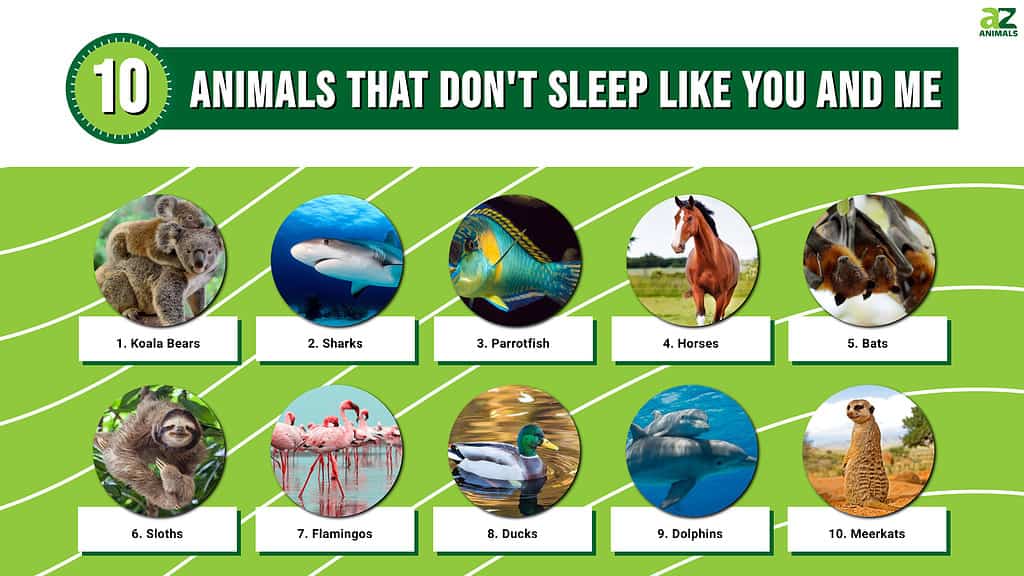
When you think of sleeping, you probably don’t picture yourself hanging from a tree branch, floating near the surface of the ocean, or gathering into a big pile on the floor with all of your family members. Of course not! But, these are just a few examples of how some animals sleep. Read on to find out about ten animals that don’t sleep like you and me.
#10 Meerkats — Sleeping In A Heap
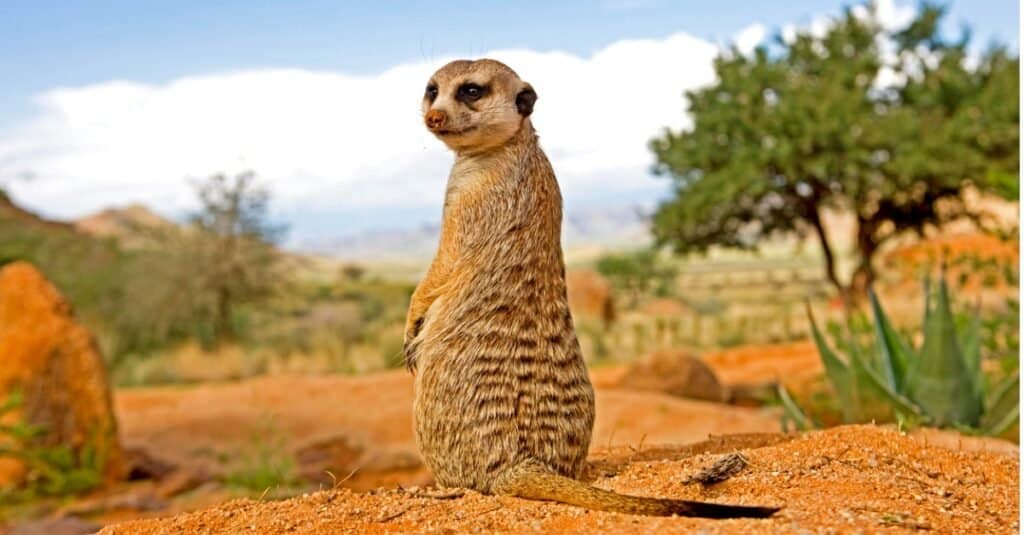
©iStock.com/slowmotiongli
The meerkat (Suricata suricatta) lives in a desert habitat in the southwestern part of Africa. This mammal has a body less than 12 inches in length and weighs around one pound. They live in groups called gangs in order to protect themselves from predators. Not only do they live together, but they also sleep together in heaps.
These small mammals pile on top of one another before going to sleep. So, if a predator such as a snake or an eagle enters their habitat, one meerkat can awaken the rest and they can take cover. Meerkats also sleep in piles to stay warm on cold nights in the desert.
#9 Dolphins — Sleeping While Afloat

©iStock.com/NaluPhoto
Dolphins must stay in the water in order to survive. So, how does this aquatic mammal sleep? Well, they have a couple of methods.
One way is called logging. Logging is simply when this animal positions itself horizontally and floats near the surface of the ocean. They bear a resemblance to a log when they do this. Some dolphins position themselves vertically to sleep.
They rest with their tailfin pointing down toward the ocean floor and their snout up toward the water’s surface. They hang in the water near the surface while dozing.
Since dolphins are social animals they sleep in groups. Staying together provides them with protection if a predator approaches. They can alert each other and take off through the water.
Pairs of dolphins in a group swim right next to each other. They slow their swimming speed in order to sleep side by side. This method is used for a short nap as opposed to a long sleep. The key is only part of a dolphin’s brain becomes inactive while it’s sleeping. This animal is always alert to some degree even though its body is resting.
#8 Ducks —Working Together To Snooze

©iStock.com/Argument
Get your ducks in a row. Have you ever heard that phrase? Well, though humans sometimes say it to each other, it is based on the actual behavior of ducks. In order to sleep, ducks line up in a row on the shore of a pond, lake, or other body of water.
They stay close together in an effort to protect the flock. Each duck turns its head around to bury its beak into the feathers on its back. Take a closer look and you’ll see there’s more going on in this row of sleeping ducks than you’d expect.
Each duck on the far end of the row has one eye closed and the other open. This allows them to get a light nap while still monitoring the environment for predators like cats or foxes. The ducks in the middle of the row close both eyes to get a deep sleep. After a while, the ducks get up and change places allowing the ducks on the ends of the row to switch to the middle to get a full sleep. This cooperation gives every duck a rest!
#7 Flamingos — Sleep On One Leg
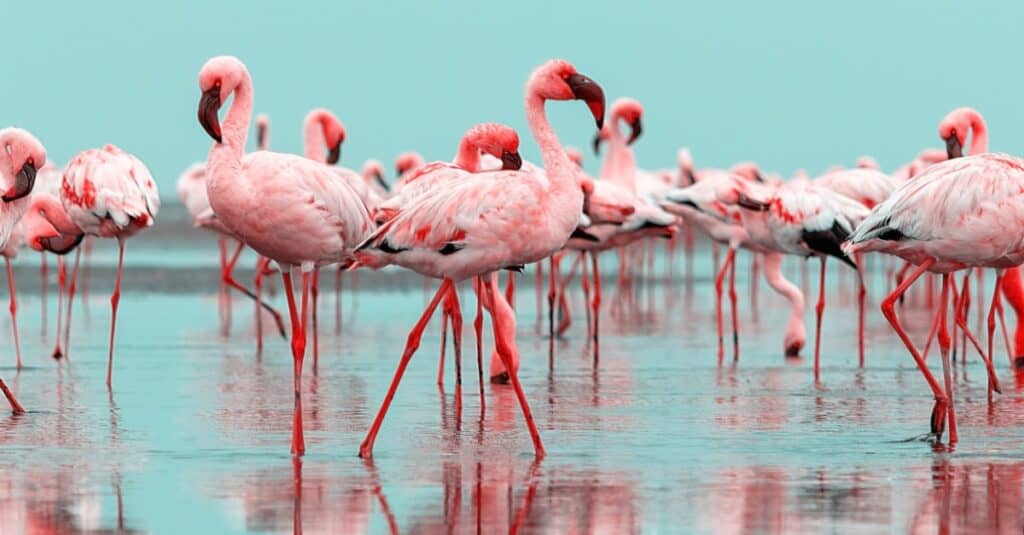
©iStock.com/YULIIA LAKEIENKO
We know this bird with brilliantly colored feathers can stand on one foot while awake. But what does it do when it’s time to get some sleep?
Flamingos sleep while standing on one leg! These birds bend their long neck to place their beak into the feathers on their back. Though it looks like these birds are fully asleep, they are not. Half of this bird’s brain is still awake and aware of its surroundings. A flamingo does this to avoid making itself completely vulnerable to predators like pythons or vultures.
As for their sleeping position, scientists haven’t made a conclusion as to why the bird continues to stand on one leg while asleep.
#6 Sloths — Sleep In Comfort
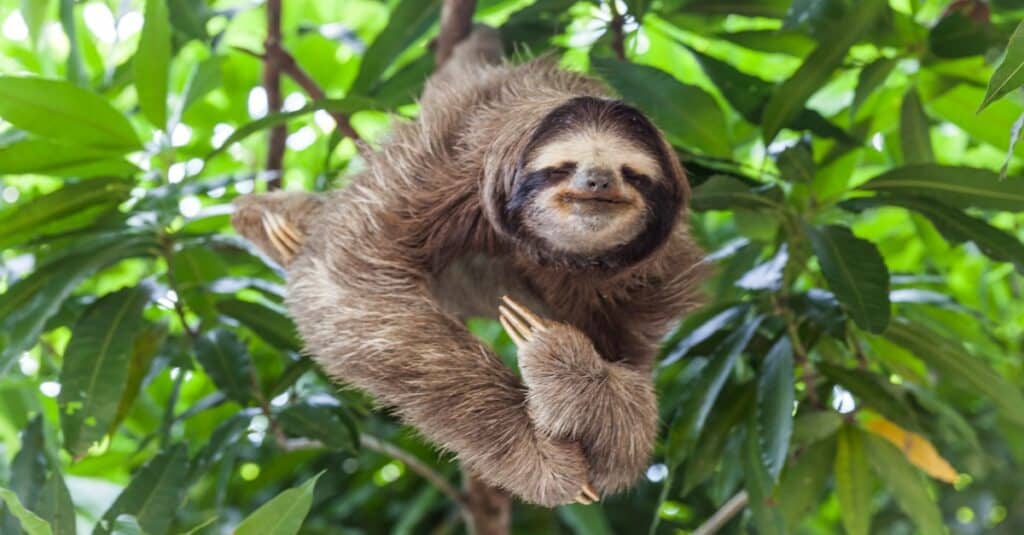
©iStock.com/Parkol
It’s no secret that sloths like to sleep. In fact, these animals sleep at least 15 hours each day, putting them high on the list of animals that don’t sleep like you and me. And when they aren’t sleeping, they’re moving very slowly. These animals have a few ways of sleeping.
Some sloths find a forked branch high in a tree on which to sleep. A forked branch is a single one that divides into two smaller branches. The middle of a forked branch serves as support for the back of the sloth. When a sloth sleeps this way it looks like it’s sleeping in a cradle.
Other sloths sleep hanging upside down from a tree branch. Their long claws help them to suspend themselves from a branch in a secure way.
#5 Bats — Hang Around To Sleep

©iStock.com/nymphoenix
Bats have a well-earned place on any list of animals that don’t sleep like humans. Bats hang upside down by their clawed feet to sleep. They may hang from a tree branch, the ceiling of a cave, or dangle from an area beneath the eaves of a home. But do they ever fall to the ground after falling asleep?
The answer is no. Special tendons in their feet prevent bats from falling while asleep. When a bat hangs on a branch, the tendons in its feet lock it into place. So, the bat remains safely suspended in the air for hours. When it wakes up, its tendons unlock and it flies away.
Bats sleep in a group or colony as a means of protection from predators. They also sleep in a colony for warmth.
#4 Horses — Sleep On Their Feet (Sometimes)

©iStock.com/Bigandt_Photography
Horses are animals that don’t sleep lying down like humans do. Horses are able to lock their legs and sleep while standing for short periods of time. When horses need to sleep for several hours, they lower themselves to the ground and tuck their legs in front of them. It’s rare to see a wild horse like a Mustang lying flat on its side. This prone position makes a wild horse vulnerable to predators.
Domesticated horses sleep standing up as well. But they feel safer than wild horses and are more likely to lie in a sunny field with their head down on the ground.
#3 Parrotfish — Sleep In A Cocoon
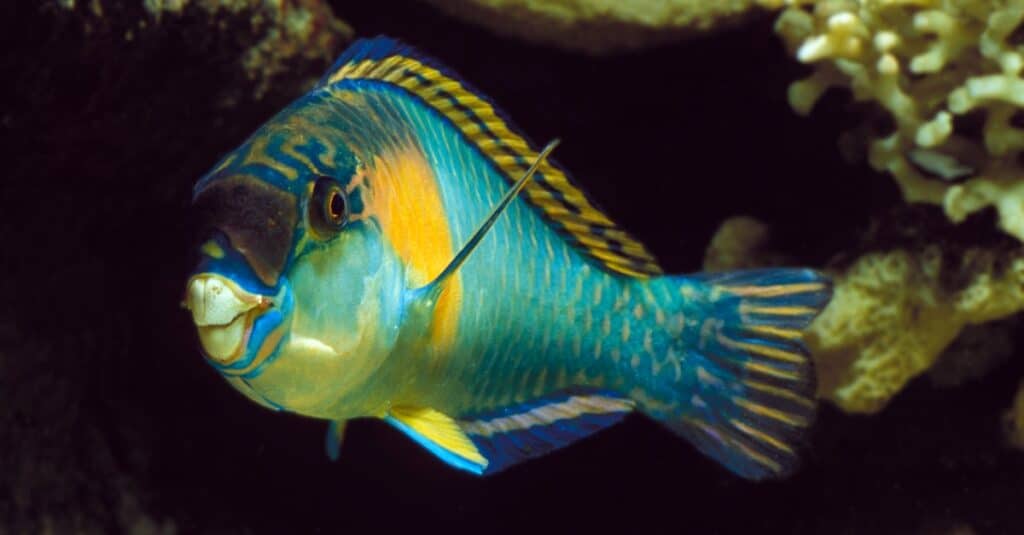
©slowmotiongli/Shutterstock.com
This colorful fish lives in the nooks and crannies of coral reefs all around the globe. Their predators include sharks and moray eels. So, how do these fish sleep? Well, before falling asleep at night, they have a special way to protect themselves from their predators.
This fish can make a clear cocoon of mucous that fits all around its body. The fish can breathe inside the cocoon. If a predator bites the cocoon, this fish is able to dart away leaving the predator holding the cocoon. The cocoon also hides the scent of the parrotfish.
#2 Sharks — Sleep Soundly
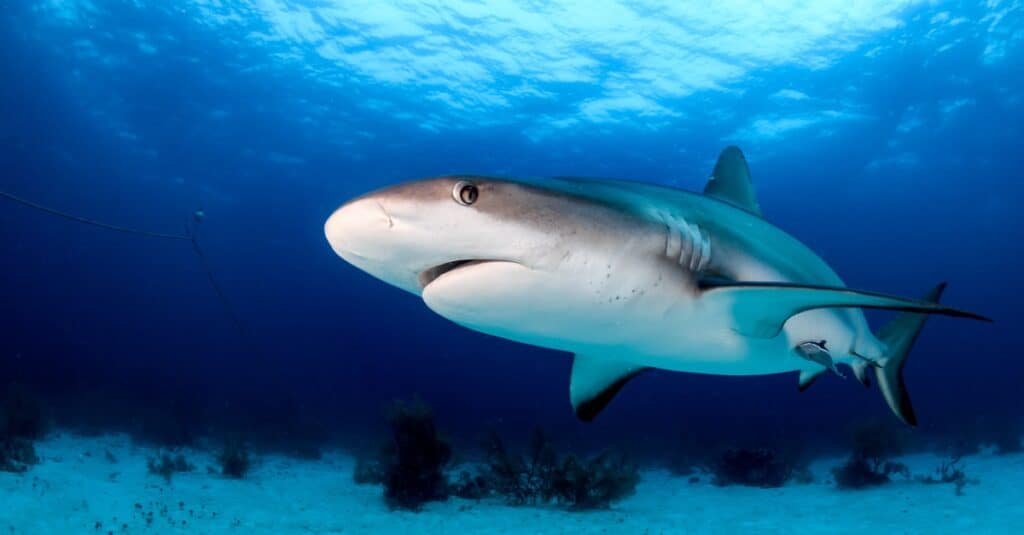
©Richard Whitcombe/Shutterstock.com
When you think of a shark you likely picture one speeding through the water. But, sharks have to rest too! After transitioning to a very slow speed, a shark faces the flow of the current. This allows it to rest while water continues to move over its gills supplying it with oxygen. Sharks don’t go into a deep sleep, however, they do rest their bodies during this time.
Compared to parrotfish, dolphins, and other sea creatures, it’s easier for sharks to rest. They have very few natural predators to consider as they catch some downtime.
#1 Koala Bears — Hang Out And Sleep
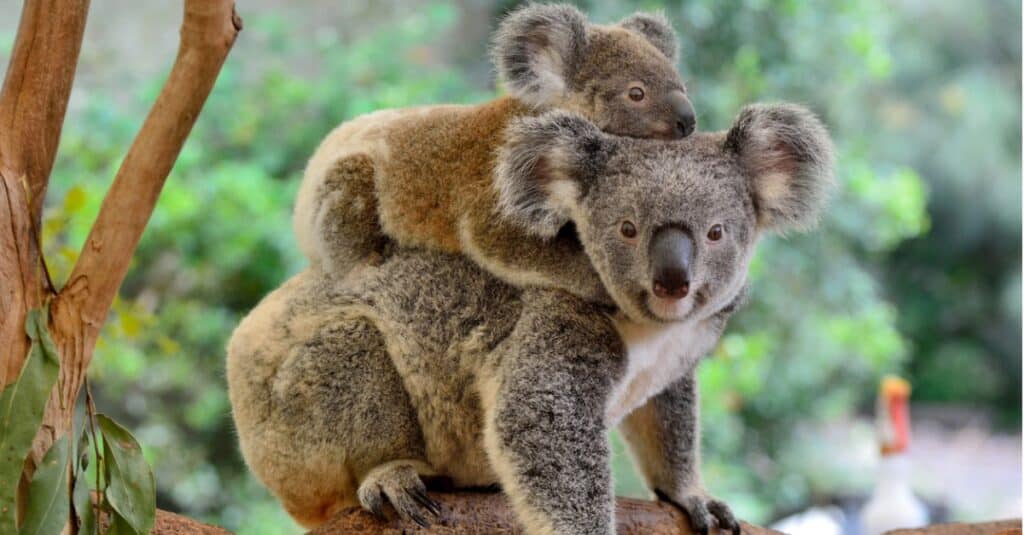
©Alizada Studios/Shutterstock.com
Koalas are certainly animals that don’t sleep like the average human. Koala bears sleep around 20 hours each day! Therefore, it makes sense that they need a safe and reliable sleeping method. They are safer from predators like dingoes if they stay in trees. These are solitary mammals, so they don’t have other Koalas close by to alert them of danger. So, how do they sleep while remaining in the trees?
A Koala bear has a thick rear end that it wedges in a forked branch up in a tree. With the help of its long claws, it is able to sleep sitting in this wedged position without fear of falling.
Koalas are not only sleepy, but they can be fussy eaters and smell like eucalyptus. They make strange noises and tend to be loners. They are born hairless, blind, and without any ears. The koala populations are tracked and counted by drones carrying infrared cameras.
Summary Of 10 Animals That Don’t Sleep Like You and Me
Here is a summarized list of animals that don’t sleep like people do:
| Rank | Animal |
|---|---|
| 10. | Meerkats |
| 9. | Dolphins |
| 8. | Ducks |
| 7. | Flamingos |
| 6. | Sloths |
| 5. | Bats |
| 4. | Horses |
| 3. | Parrotfish |
| 2. | Sharks |
| 1. | Koala Bears |
Thank you for reading! Have some feedback for us? Contact the AZ Animals editorial team.








